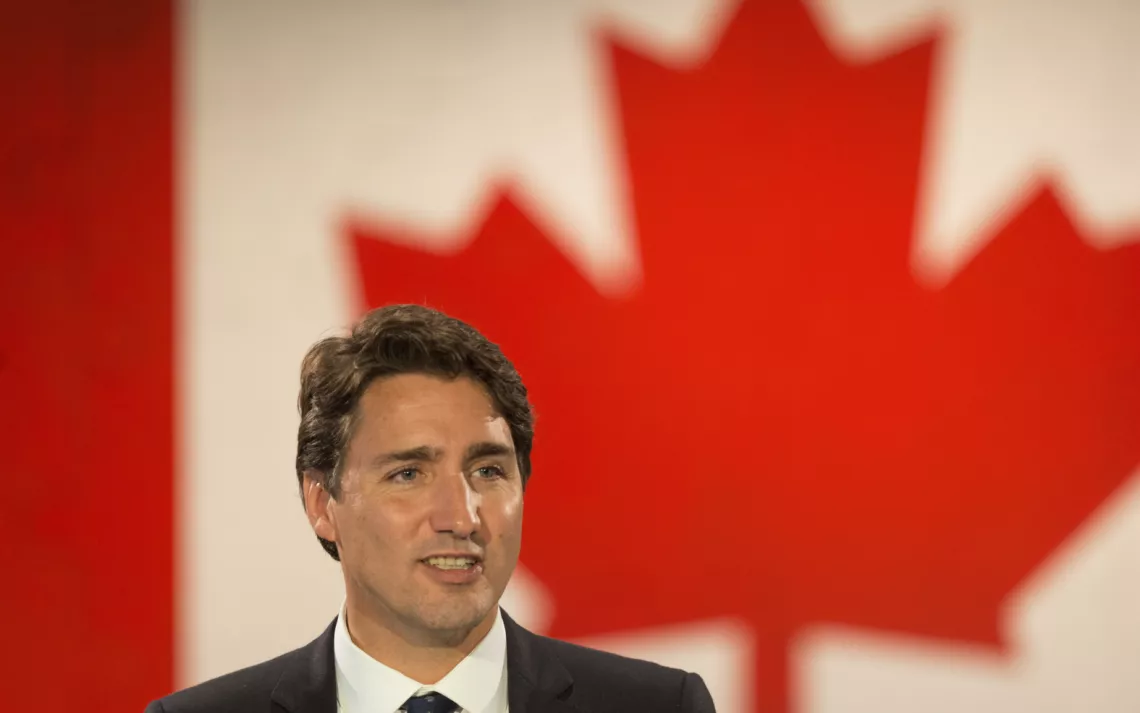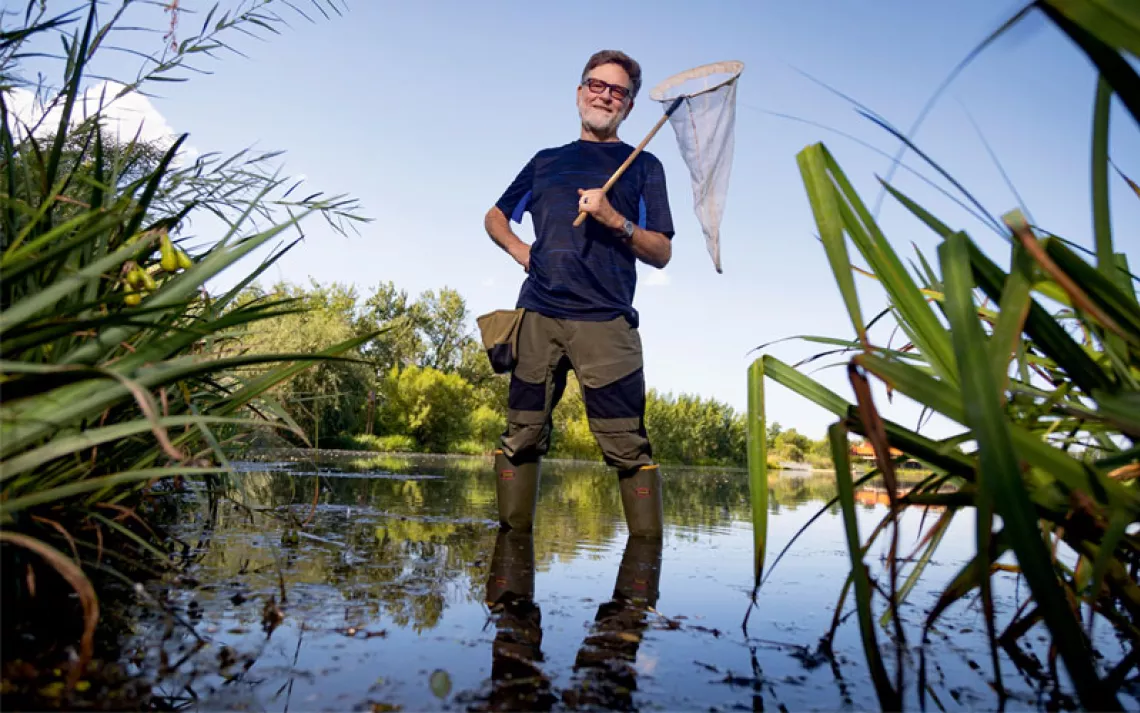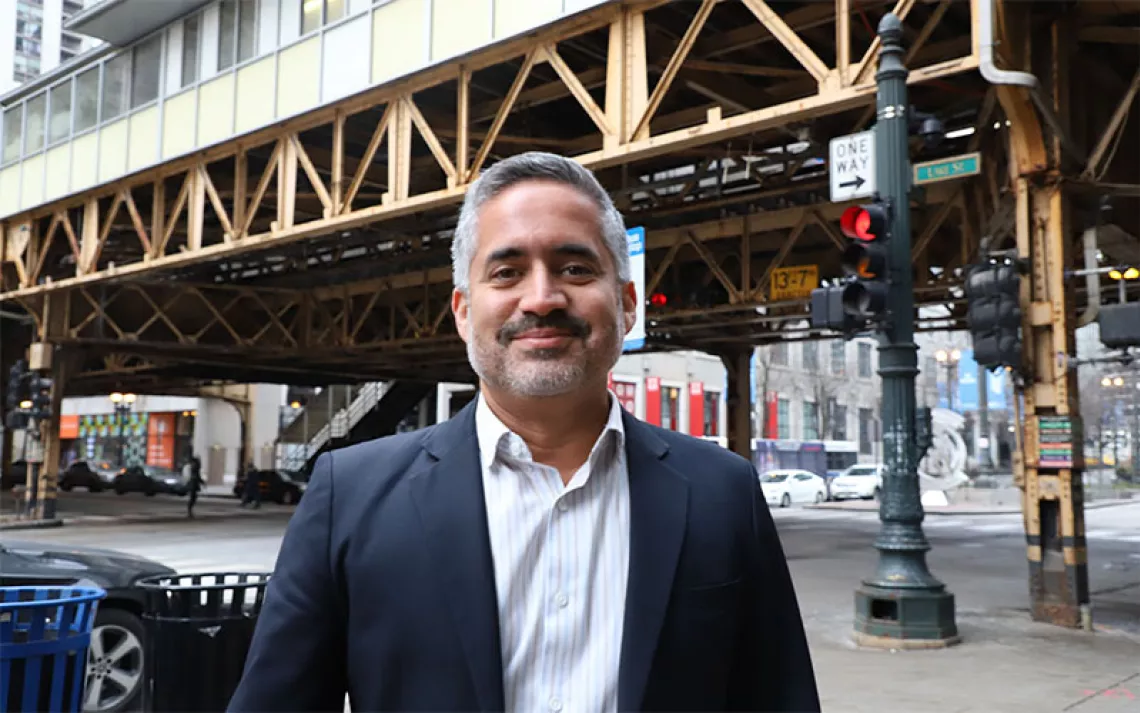North of the Border, Canadians Turn Over a New Maple Leaf

Justin Trudeau, Canada's recently elected prime minister. | Photo by iStockphoto/shaunl
When it comes to environmental policies, the Canadian government is turning over a new leaf, making greens cautiously optimistic that Canada is becoming a positive force on climate action and the transition to a clean energy economy.
During his nearly 10-year tenure as prime minister, Conservative Party leader Stephen Harper was an aggressive opponent of Canadian environmentalists. The son of an Imperial Oil accountant, Harper spent considerable time gutting environmental regulations and promoting Canada’s huge fossil fuel industry. He was an aggressive booster of the ill-fated Keystone XL pipeline and of Alberta’s tar sands industry in general. Government scientists complained that the prime minister’s office was muzzling their research. Environmental organizations complained that they were singled out for tax audits.
In November, Canadian voters decided that they had had enough and elected Liberal Justin Trudeau as their new leader. Prime Minister Trudeau has been in office just over two months, but in that short time he’s already done more to protect the environment and battle climate change than Stephen Harper did in 10 years.
Trudeau quickly moved to rename the country’s environment ministry to be the ministry of Environment and Climate Change. That symbolic gesture was soon followed by real action, as Prime Minister Trudeau, in a memo to the country’s transportation minister, called for a ban on new oil tanker traffic on British Columbia’s north coast, essentially killing the Northern Gateway pipeline. He committed to modernizing the National Energy Board, an agency that lost touch with reality during the hearings for both the Northern Gateway and the Trans Mountain pipeline projects. And he freed government scientists to speak to the media, as his minister for innovation, science, and economic development declared that “our government values science and will treat scientists with respect.”
Canadian environmentalists have found themselves in the strange position of applauding the actions coming out of Ottawa.
“There is a lot of cautious optimism, though people have been conditioned to expect the worst from Ottawa, especially with regard to the environment and indigenous rights,” says Kai Nagata, a spokesperson for Dogwood Initiative, a British Columbia-based environmental group usually at war with Canada’s federal government. “But it’s a new world, and things are changing very rapidly.”
“It was an enormous relief that the Harper decade is finally over,” adds Keith Stewart, climate change and energy campaigner for Greenpeace Canada.
Tzeporah Berman has been on the environmental movement’s front lines in Canada for more than 20 years, including cofounding the NGO Forest Ethics, and working with Greenpeace Canada. She’s faced down old-growth-destroying bulldozers in British Columbia and aggressive CEOs in boardrooms. When she read Trudeau’s first environmental memos in November, she admits that she “cried like a baby.”
Then, the Trudeau government went a step further and shocked many environmentalists by playing a constructive role at the U.N. climate summit in Paris last month.
Trudeau wasn’t supposed to have much of an impact at the Paris talks. He limped to the climate conference with Stephen Harper’s archaic climate policies in tow—a weak commitment to reduce Canada’s greenhouse gas emissions by 30 percent below 2005 levels by 2030. But then Canada’s Environment and Climate Change Minister Catherine McKenna announced her support for a 1.5°C target to cap global temperature rise.
Still, even as Canadian environmentalists celebrate the fresh political atmosphere in Ottawa, they are guarded about whether the changes hint at a whole new policy orientation, or whether they’re just political show.
According to Berman, currently an adjunct professor of environmental studies at York University, aligning the climate and energy policy of the federal and provincial governments and navigating the gap between the climate rhetoric and the climate reality will not be easy.
“The biggest cause for concern is that it is unlikely that simply adding up provincial targets will get us on track for emission reductions nationally that align with a 1.5°C goal,” she says. “We need to aim for a 50 percent reduction in emissions by 2030 and 100 percent by 2050. This will require some federal programs and regulations that will likely not be popular with some of the provinces and industries.”
Greenpeace’s Stewart agrees. “Once you’re in government, you have to make choices,” he says. “The real challenge is going to come when they sit down with the premiers of the provinces. That’s when the rubber hits the road when they try to craft a national [emissions reduction] strategy.”
But some provincial governments may be easier to deal with than they would have been previously. Case in point: Alberta, home of the notorious tar sands deposits, where voters last year also elected a progressive government.
Last May, Alberta citizens gave the premier’s office to the New Democratic Party. Alberta Premier Rachel Notley has produced a new climate policy that calls for an end to coal-generated electricity by 2030, a 30 percent renewable energy standard, and a carbon tax that will go into effect this year. It came as a surprise to many that Alberta officials even attended the Paris talks, let alone participated in a meaningful way.
Even as environmentalists celebrate the political turnaround in Canada, many are skeptical about whether the new governments will take a more progressive stance toward Canadian First Nations, which are often on the frontlines of environmental fights.
“The buck keeps getting passed from federal to provincial governments when talking about climate policy and energy policy in Canada, because nobody wants to take responsibility for the so-called Indian problem,” says Clayton Thomas-Muller, an indigenous rights organizer and StopIt@The Source campaigner for 350.org. “If you have a map of native territories and overlay a map of high-carbon development, you see that this development happens where native people live. This is environmental racism. The government has taken dramatic first steps, but we are living in the extreme era of climate change, and we have a lot at stake.”
Canada’s First Nations are fighting two battles. First, they are feeling the effects of climate change far greater than any other community in the country, especially indigenous people in the Arctic. And these First Nations are also disproportionately affected by on-the-ground impacts of fossil fuel extraction: the mines, the pits, the tailings ponds, and the toxic waste that comes along with it.
During the election campaign and since coming into office, Trudeau has made the federal government’s relationship with indigenous peoples a priority, but there is much work still to be done. “I think we are all delighted by the first steps,” Thomas-Muller says. “But it’s not up to us to immediately hand trust over. Trust has to be earned, especially after 10 years of Mr. Harper.”
The Trudeau government faces many tests in 2016. It will have to make decisions on the proposed Energy East and Trans Mountain pipeline projects to get tar sands bitumen to the ocean, as well as Line 67, which would send the product south of the border along energy company Enbridge’s expanded Mainline. If all these projects were to move forward, they would increase Canadian tar sands exports by hundreds of thousands of barrels per day—just as the oil industry wants. It remains an open question whether Canada will continue to bet its future on being a petro-state, or whether the young prime minister will take advantage of low oil prices and a slowing economy to finally cut the carbon cord in a significant way.
At least this much is clear: Canadian environmentalists are committed to matching their optimism with a sustained vigilance. “You cannot drive toward decarbonization while building more capacity to produce fossil fuels,” Berman says. “We can’t shut down the oil and gas industry overnight, but we can scale it back and not invest in more infrastructure.”
 The Magazine of The Sierra Club
The Magazine of The Sierra Club







